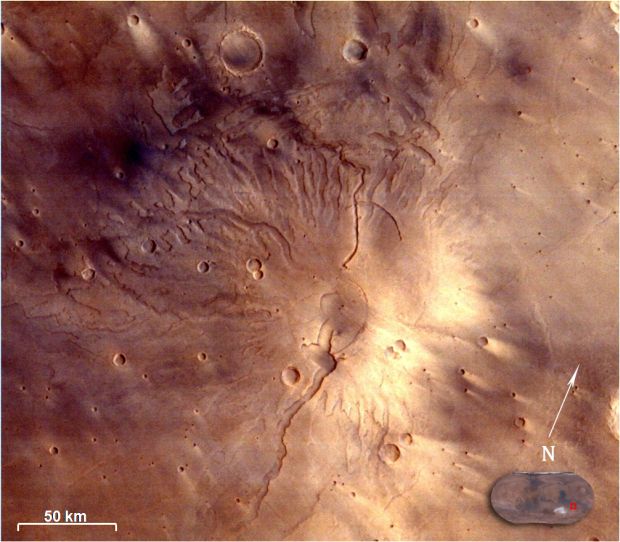-
Chandrakant 'CK' Isi
24th Jul 2015
The biggest rocket India launched in 2013's Diwali was PSLV C25. The payload was MOM (Mars Orbiter Mission) or simply referred as 'Mangalyaan'. The spacecraft successfully started orbiting the Mars in September 2014. India became the first Asian nation to reach the Mars orbit, that too in its first attempt. China and Japan have failed to do this so far.Mangalyaan's objective is to observe and study the red planet's surface features and mineralogy. It will also look for methane in the Martian atmosphere that may provide information about the past existence of life on Mars.
The orbiter has been frequently sending pictures and data back home. This includes some of the high resolution images revealed by ISRO this month:

Gale crater photographed by Mars Colour Camera.

Tyrrhenus Mons as seen by Mars Color Camera.
So how does all this data transfer and communication thing works in space? Is it anything like the Internet connections we have at our home and offices?
A quick answer is yes, but painfully slow.
All such mission data and information is handled by DSN (Deep Space Network). Huge antennas like the ones you might have seen in the movie Contact (1997) are used to transmit and receive data. First such network commissioned by JPL (under US army) dates back to 1958.
America has three DSN facilities at the carefully chosen locations - Canberra (Australia), Madrid (Spain), and Goldstone (US). Once a mission reaches deep space, it is always in view of at least one of the facility.

Russia, European Union, China, Japan, and India too have their own Deep Space Networks. So missions such as Mangalyaan are taken care off by the Indian DSN facility at Byalalu village near Bangalore.
Since India does not have multiple network facilities, NASA provides vital position data via its three stations when needed.
Despite communications being so important in the space missions, the technology in the DSN networks haven't been upgraded for years. With distance between probes and our planet stretching in millions and billions of kilometres, the speeds are more pathetic than the early dial-up connections.
For instance, during the Pluto mission, New Horizons' data was reaching Earth at approx. 1200 bits per second. Sending commands from Earth was even slower at around 500 bits per second. To put things in perspective, lets see how many bits are required to make 1 MB. Well, the answer is 8000000 bytes.
So, next time you see a high resolution image of any celestial body in our solar system, think of all the trouble scientists went through to make it happen.
So How Does Mangalyaan Stay In Touch With Home? | TechTree.com
So How Does Mangalyaan Stay In Touch With Home?
Well, it has to put up with connections slower than early dial-ups.
News Corner
- DRIFE Begins Operations in Namma Bengaluru
- Sevenaire launches ‘NEPTUNE’ – 24W Portable Speaker with RGB LED Lights
- Inbase launches ‘Urban Q1 Pro’ TWS Earbuds with Smart Touch control in India
- Airtel announces Rs 6000 cashback on purchase of smartphones from leading brands
- 78% of Indians are saving to spend during the festive season and 72% will splurge on gadgets & electronics
- 5 Tips For Buying A TV This Festive Season
- Facebook launches its largest creator education program in India
- 5 educational tech toys for young and aspiring engineers
- Mid-range smartphones emerge as customer favourites this festive season, reveals Amazon survey
- COLORFUL Launches Onebot M24A1 AIO PC for Professionals







TECHTREE